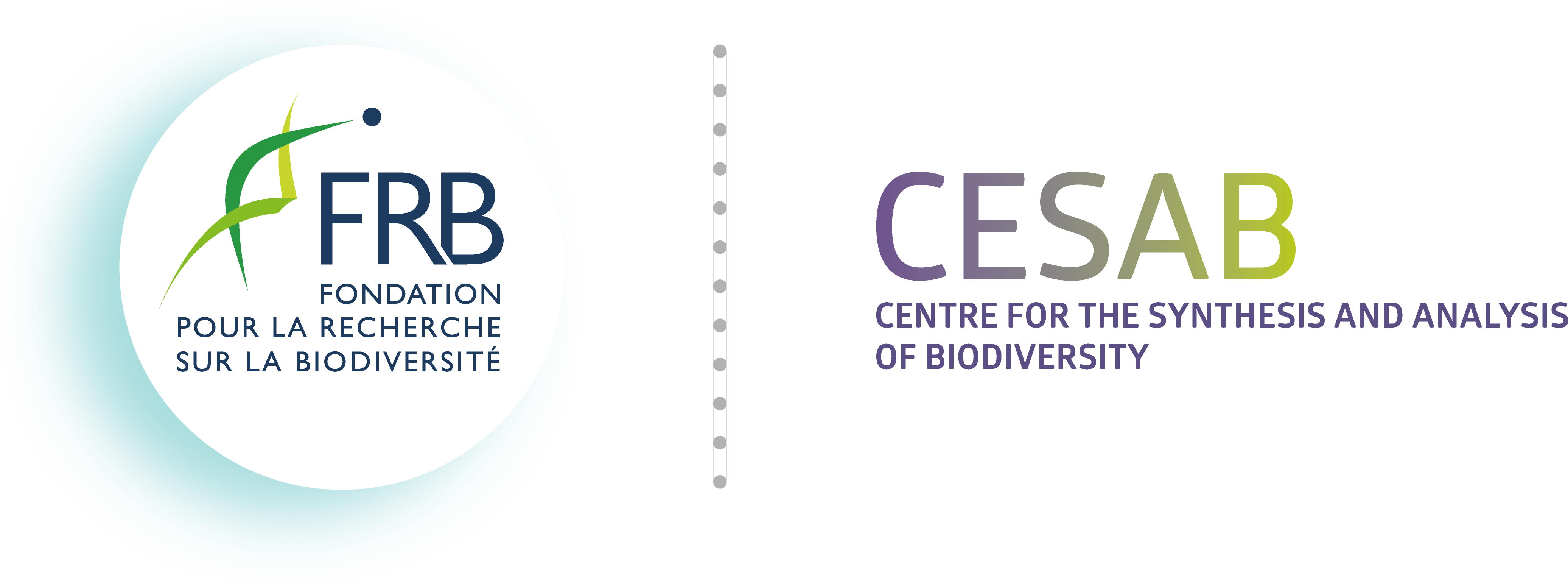FUNCTIONALWEBS
The functional diversity of food webs: linking ecology, physiology and biogeography

Trait-based ecology recasts community ecology’s central question about species coexistence as: which processes determine the functional trait composition of ecological communities? Spatial scale is implicit in this question, as different processes are expected to act at different scales.
Community ecology has struggled to provide predictive models that link environmental drivers with the structure of biological communities. Greater progress could be made by focussing on the functional traits of species (their physiological, biological and ecological attributes), rather than on their identities. We are specifically missing analyses of trait diversity at large spatial scales where dispersal between sites is rare, so that we cannot determine if functional diversity in general is constrained local resources or limited by dispersal, evolution, or biogeography.
FUNCTIONALWEBS focal system (the invertebrates inhabiting water-filled bromeliad leaves) has been sampled from 22 neotropical locations, and the dataset (850 taxa; 1750 bromeliads; 12 traits; environmental variables) has been collated in an SQL database. The working group’s fundamental question was: which processes determine functional community structure at different spatial scales?
FUNCTIONALWEBS asked 3 sub-questions:
- Are invertebrate communities in a single bromeliad non-randomly assembled in terms of functional traits?
- Within a site, does the distribution of functional traits change predictably over environmental gradients?
- Is there convergence in the functional structure of communities over a broad biogeographic range ; alternatively, does functional community structure primarily depend on biogeographic regions?

PI:
Régis CEREGHINO – University Paul Sabatier Toulouse III (France)
Postdoc:
Andrew MACDONALD – University Paul Sabatier Toulouse III (France)
FUNCTIONALWEBS brings together experts in community ecology, biogeography and macroecology.
FUNCTIONALWEBS was selected from the 2014 call for proposals. The project selection process was carried out by a committee of independent experts.
[09] Srivastava DS, MacDonald AAM, Pillar VD, Kratina P, Debastiani VJ, Guzman LM, Trzcinski M, Dézerald O, Barberis IM, de Omena PM, Romero GQ, Ospina‐Bautista F, Marino NAC, Leroy C, Farjalla VF, Richardson BA, Gonçalves AZ, Corbara B, Petermann JS, Richardson MJ, Melnychuk MC, Jocqué M, Ngai JT, Talaga S, Piccoli GCO, Montero G, Kirby KR, Starzomski BM & Céréghino R (2023) Geographical variation in the trait‐based assembly patterns of multitrophic invertebrate communities. Functional Ecology, 37, 73-86. DOI: 10.1111/1365-2435.14096.
[08] Céréghino R, Trzcinski MK, MacDonald AAM, Marino NAC, Acosta Mercado D, Leroy C, Corbara B, Romero GQ, Farjalla VF, Barberis IM, Dézerald O, Hammill E, Atwood TB, Piccoli GCO, Ospina Bautista F, Carrias J-F, Leal JS, Montero G, Antiqueira PAP, Freire R, Realpe E, Amundrud SL, de Omena PM, Campos ABA & Srivastava DS (2022) Functional redundancy dampens precipitation change impacts on species-rich invertebrate communities across the Neotropics. Functional Ecology, 36, 1559–1572. DOI: 10.1111/1365-2435.14048.
[07] Ruiz T, Carrias J-F, Bonhomme C, Farjalla VF, Jassey VEJ, Leflaive J, Compin A, Leroy C, Corbara B, Srivastava DS & Céréghino R (2022) Asynchronous recovery of predators and prey conditions resilience to drought in a neotropical ecosystem. Scientific Reports, 12, 8392. DOI: 10.1038/s41598-022-12537-2.
[06] Bonhomme C, Céréghino R, Carrias J-F, Compin A, Corbara B, Jassey V, Leflaive J, Farjalla VF, Marino NAC, Rota T, Srivastava DS & Leroy C (2021) In situ resistance, not immigration, supports invertebrate community resilience to drought intensification in a neotropical ecosystem. Journal of Animal Ecology, 90, 2015–2026. DOI: 10.1111/1365-2656.13392.
[05] Guzman LM, Trzcinski MK, Barberis IM, Céréghino R, Srivastava DS, Gilbert B, Pillar VD, de Omena PM, MacDonald AAM, Corbara B, Leroy C, Ospina Bautista F, Romero GQ, Kratina K, Debastiani VJ, Gonçalves AZ, Farjalla VF, Richardson BA, Richardson MJ, Dézerald O, Petermann J, Talaga S, Piccoli GCO, Jocqué M & Montero G (2021) Climate influences the response of community functional traits to local conditions in bromeliad invertebrate communities. Ecography, 44, 440–452. DOI: 10.1111/ecog.05437.
[04] Céréghino R, Françoise L, Bonhomme C, Carrias J-F, Compin A, Corbara B, Jassey V, Leflaive J, Rota T, Farjalla VF & Leroy C (2020) Desiccation resistance traits predict freshwater invertebrate survival and community response to drought scenarios in a Neotropical ecosystem. Ecological Indicators, 119, 106839. DOI: 10.1016/j.ecolind.2020.106839.
[03] Marino NAC, Céréghino R, Gilbert B, Petermann J, Srivastava DS, de Omena PM, Ospina Bautista F, Farjalla VF, Guzman LM, Romero GQ, Trzcinski MK, Barberis IM, Corbara B, Debastiani VJ, Dézerald O, Kratina K, Leroy C, MacDonald AAM, Montero G, Pillar VD, Richardson BA, Richardson MJ, Talaga S, Gonçalves AZ, Piccoli GCO & Jocqué M (2020) Species niches, not traits, determine abundance and occupancy patterns: A multi-site synthesis. Global Ecology and Biogeography, 29, 295–308. DOI: 10.1111/geb.13029.
[02] de Omena PM, Srivastava DS & Romero GQ (2019) Consumptive effects and mismatch in predator–prey turnover rates cause inversion of biomass pyramids. Oecologia, 190, 159–168. DOI: 10.1007/s00442-019-04394-0.
[01] Céréghino R, Pillar VD, Srivastava DS, de Omena PM, MacDonald AAM, Barberis IM, Corbara B, Guzman LM, Leroy C, Ospina Bautista F, Romero GQ, Trzcinski MK, Kratina P, Debastiani VJ, Gonçalves AZ, Marino NAC, Farjalla VF, Richardson BA, Richardson MJ, Dézerald O, Gilbert B, Petermann J, Talaga S, Piccoli GCO, Jocqué M & Montero G (2018) Constraints on the functional trait space of aquatic invertebrates in bromeliads. Functional Ecology, 32, 2435–2447. DOI: 10.1111/1365-2435.13141.